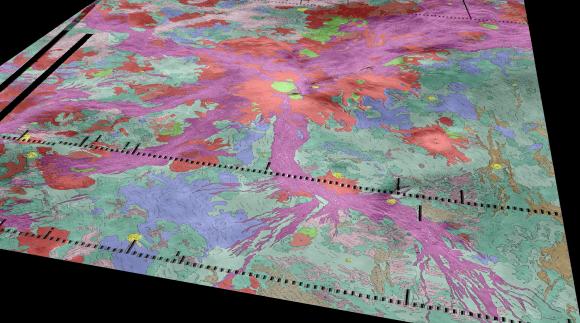| Online: | |
| Visits: | |
| Stories: |

| Story Views | |
| Now: | |
| Last Hour: | |
| Last 24 Hours: | |
| Total: | |
Planetary Exploration Rules!
Mapping the Solar System Continues…
Okay, so I have Pluto on the brain. I admit it. New Horizons is the last probe to visit a planet we haven’t yet visited, so it’s really big news. It’s exciting to think that all our preconceived “views” of Pluto will get blown away just three weeks away from close flyby of this little world and its moons. Heck, they’re getting blown away each time the folks on the mission issue another image.
But, there are other cool stories going on right now, so let’s spread around a little planetary mission love!

The mysterious glowing white dots of Ceres. What are they? Courtesy NASA/DAWN mission
First of all, the Dawn mission at Ceres keeps cranking out the great images of that dwarf planet. It’s mapping Ceres at high resolution, and on each orbit, it picks up more details of the surface.
The bright white dots that have so intrigued everybody are still…intriguing everybody. It’s not clear why they exist and what they are, but they have the planetary scientists considering many possibilities. Ice and/or salt deposits are two of the many suggestions about what they are. How they got there is still a mystery.

Craters, sunken “graben-like” areas, what looks like a cliff, and a pyramid-shaped mountain also grace Ceres’s surface. NASA/DAWN msision
What else has Dawn seen? Not surprisingly, for a world without an atmosphere and orbiting in the Asteroid Belt, there are many craters. We also see long sinuous lines that could be cracks, and in one area, a pyramid-shaped mountain that rises up about 5 km (3 miles) above the surface. And, it looks like there are more white spots scattered around the rest of the surface, too. All in all, Ceres is giving us quite a show, and the mapping has only just begun!
The other story that caught my eye this past week is the evidence of active volcanoes on Venus. Now, we’ve known for a long time that Venus is a volcanic world, and studies of its atmosphere have telltale signs of volcanic eruptions. But, no one has ever seen an eruption there because of the heavy, dense cloud cover that obscures our view of the surface.

Thermal (heat) mapping of the Venus surface show hot spots in the region of a volcano called Ozza Mons. Courtesy Ivanov/Head/Dickson/Brown University.
Astronomers spotted some interesting data in observations made by the European Space Agency’s Venus Express mission and thermal (heat) images made by the spacecraft’s Venus Monitoring Camera. It recorded some temperature spikes that just happened to coincide with known hot spots on the planet’s surface. Those hotspots flared up and then slowly faded down, in a manner very similar to what an Earth-bound volcano does when it erupts a lot of material for a while and then slows down. The planetary scientists took this as strong evidence that Venus volcanically active now. That also means that it’s active in its interior, too.
The news from Dawn, New Horizons, Venus Express, as well as Cassini and the swarm of probes at Mars is certainly extending our golden age of planetary exploration. And, now that NASA has committed to a mission to Europa, it looks like that age will continue. Revel in it folks! There are only a few times in history when so much has been discovered on behalf of all of us by our scientist friends and neighbors!
Source: http://thespacewriter.com/wp/2015/06/22/planetary-exploration-rules/



